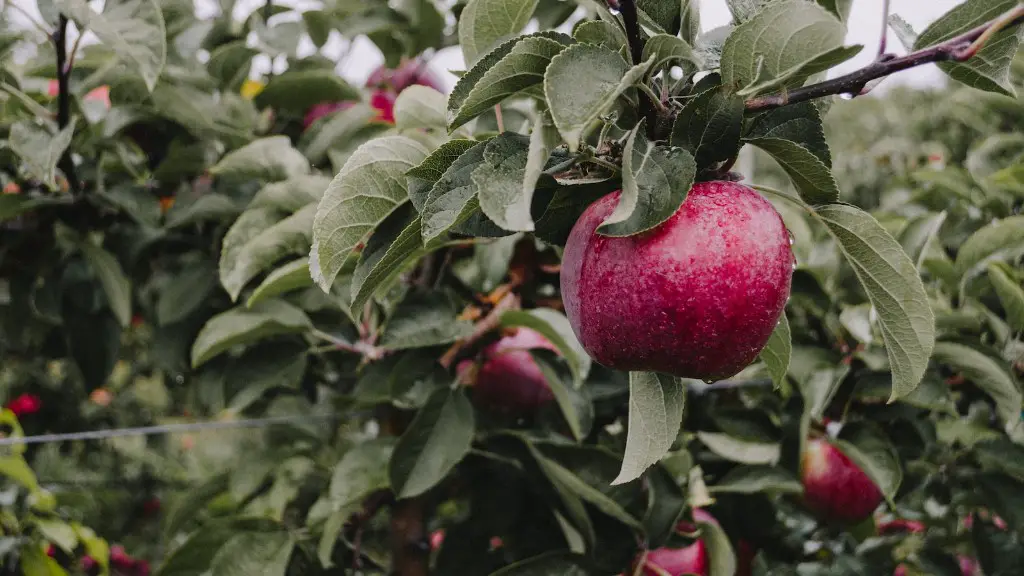Introduction
Avocado is a popular fruit tree with an abundance of benefits that range from its amazing flavor to its astonishing quantity of essential vitamins. Avocado trees are easy to grow and require minimal attention and care. However, with proper maintenance, one can control their size and keep their avocado tree small. This can be achieved through judicious pruning, soil drainage and restricted water supply. In this article, we’ll be discussing the various methods to keep an avocado tree small and healthy by taking into account the perspective of experienced avocado growers.
Pruning
Pruning is essential to enhancing the growth and health of a small avocado tree. It involves removing unwanted shoots, limbs, and large branches in order to make room for the other new ones. The first step is to prune off the vigorous shoots and limbs at their base, which will help balance the crown and promote balanced growth. Additionally, it is also beneficial to thin out some of the existing foliage in order to boost the sunlight penetration in areas that area shaded. This is especially important during the winter season, when the foliage is thicker. Moreover, pruning should be done around early spring, before any new buds start to appear.
Soil Structure
The avocado tree’s growth and size is largely dependant on the quality of the soil it is planted in. All soils should be thoroughly checked before planting and amended as necessary, particularly when dealing with sandy soils, which contain little amounts of nutrients. If not treated, they can hinder the growth of the tree significantly. Thus, it is important to treat the soil by adding organic matter like manure or compost and a balanced fertilizer that contains the major nutrients like nitrogen, phosphorous and potassium. Additionally, it is also important to ensure that the soil is well-draining and not prone to waterlogging.
Water Management
Avocado trees need ample water to remain healthy and robust, however, too much water can lead to root rot and cause the tree to grow larger than it should be. It is advised to water only when the soil is dry, and in smaller amounts to better absorb it. During the winter season, one should be especially mindful about their tree’s water intake since cold temperatures and wind can dry out the soil quickly.
Mulching
Mulching the soil around the avocado tree is a great way to keep it small and healthy. Mulching helps in regulating the moisture levels in the soil and keeps the roots cool and moist, while improving the overall soil structure. This also helps in providing protection to the roots against hot temperatures, preventing sunburn or heat stress. Furthermore, mulching also helps suppress weeds and keep the surrounding soil weed-free, which is essential to minimize the competition between plants for water and nutrients.
Fertilizer
Fertilizer helps the avocado tree reach its fullest potential by providing its roots with essential nutrients like nitrogen and phosphorous that are not present in the soil. When it comes to selecting a fertilizer, it’s advised to choose one that is specifically designed for avocado trees. As such, it should include a micronutrient package (such as iron, zinc and magnesium), as well as a balanced macro-nutrient package. It is important to pay attention to the instructions on the fertilizer, as overwatering or over-fertilizing the tree can cause its roots to burn and the tree itself to grow too large.
Pest Control
Pest infestations pose a major threat to avocado trees, as they can weaken the tree’s branches, cause deformities and stunt its growth. The most commonly found pests on avocado trees are scale insects, mealybugs and aphids. It is important to spot signs of pest infestations early, such as honeydew dripping from branches, and take appropriate action. The most effective way this can be done is by spraying the tree with horticultural oil, and removing the eggs or dead pests that may be trapped in the leaves.
Disease Prevention
Diseases can impede the growth of an avocado tree and even lead to death if not treated properly. The most common diseases seen in avocado trees are root rot, powdery mildew, and anthracnose. To prevent diseases, one can use a protective coating on the tree or naturally apply compost or mulch around the base. Moreover, it’s advised to pay attention to signs of diseases like wilting leaves, yellow spots and discoloration on the leaves, and treat them immediately with the appropriate pest control measures.
Sunlight
Avocado trees require adequate sunlight to thrive and reach their full potential. Several hours of daily sunlight are essential for the avocado tree’s growth and development. Sunlight is also important for photosynthesis, which helps the tree create the building blocks for its leaves, blooms, and fruits. Making sure the tree receives an adequate amount of sunlight by trimming any trees that may be blocking the light from the avocado tree is one of the most effective ways to keep it small and healthy.

